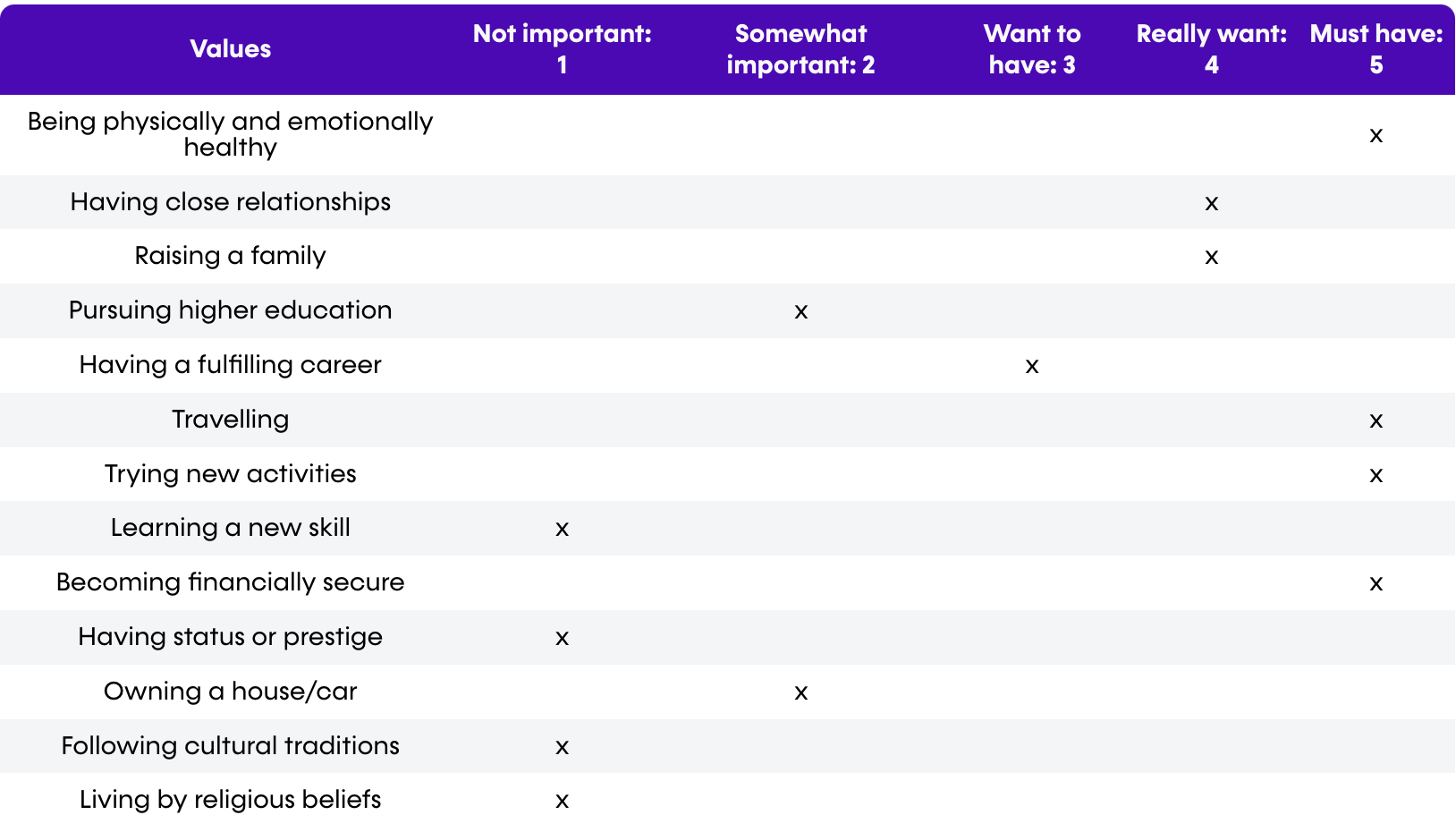Do you know how much you’re earning — and how much you’re spending?
If you consistently look at your bank balance and wonder where the money goes then it’s time to take charge of your funds — and that starts with making a budget.
The good news is that it doesn’t have to be scary or time-consuming. But having a budget is critical. A budget gives you a big picture of your spending and saving habits and it’s a great way to take charge of your finances. Consider a budget your one-stop document for keeping track of your income, expenses, and savings — and the start of making smarter spending (and saving) decisions.
There are several methods on how to budget your money. To help, here are five easy steps to get started on creating a budget without the feeling of being overwhelmed.
@import url(“https://cdnjs.cloudflare.com/ajax/libs/font-awesome/4.7.0/css/font-awesome.min.css”); .toc__wrapper { background: rgba(0,0,0,.05); padding: 1rem 2rem; font-family: “Open san”s, sans-serif !important; border: 1px solid rgba(0,0,0,.1); } .checked, .fa-star-half-o { color: #780095; } .grey { color: #d8d8d8 } .rating { padding: 10px; line-height: 1.3; } .rating p { margin: 0 !important; padding: 0 !important; } .rating__text–number { font-weight: 700; padding-right: 6px; } .toc__wrapper h3 { font-size: 0.85rem; text-transform: uppercase; padding-left: 0 !important; } .toc__links { font-size: 0.95rem; width: 100%; padding: 0 !important; columns: 2; } .toc__links–item { margin-left: 0 !important; } .toc__links–item a { border-bottom: 1px solid #780095 !important; } .tip__box::before { content: “”; background: url(“https://media1.moneywise.com/lightbulb_128.png”) no-repeat; background-size: 50px 50px; position: absolute; height: 5rem; width: 5rem; top: 0.4rem; left: -1.5rem; } .tip__box { position: relative; background: rgba(0,0,0,.05); border: 1px solid rgba(0,0,0,.1); } .tip__box–body { margin-bottom: 0 !important; padding: 1rem 1.5rem !important; } .tip__box–body::before { content: “Tip: “; font-weight: 700; } .comparison__container { border-top: 3px solid #d4d4d4; border-bottom: 3px solid #d4d4d4; padding: 1.25rem 1.5rem .5rem; justify-content: center; display: flex; margin: 1.5rem 0; } .comparison__list–list { padding: 0 !important; } .comparison__list–list li { list-style-type: none !important; margin-bottom: 1rem; } .comparison__list–list li::before { content: ‘2022’; position: absolute; margin-left: -1rem; color: #780095; } .comparison__list:nth-child(1) h4 , .comparison__list:nth-child(2) h4 { position: relative; padding-left: 3.8rem; } .comparison__list:nth-child(1) h4::before { content: “”; background: url(“https://media1.moneywise.com/check.png”) no-repeat; background-size: 20px 20px; position: absolute; height: 2rem; width: 2rem; top: 0.2rem; left: 2rem; } .comparison__list:nth-child(2) h4::before { content: “”; background: url(“https://media1.moneywise.com/cross.png”) no-repeat; background-size: 20px 20px; position: absolute; height: 2rem; width: 2rem; top: 0.2rem; left: 2rem; } .super–link { font-size: smaller; vertical-align: super; } .super–link a { color: #246FC8 !important; border-bottom: none !important; } .super–link a::before { content: “[“; } .super–link a::after { content: “]”; } @media(max-width: 768px) { .toc__links { columns: 1; } .comparison__container { flex-direction: column; } .comparison__list–list li { margin-left: 0 !important; } }
Step 1: Understand your values
Start with your values. Values are those intangible measures of a good life. For instance, good health may be a value, as it a fulfilling career, or a place to call home. By starting with your values you’re able to understand what value you are helping to support when you spend or save your money.
In general, the most common values are health, a fulfilling career, or finding a place to call home. Other options can include spending time with family, nurturing a passion or project or fulfilling a dream, such as moving to a new country.
Once you’ve created the list, take a moment to rank each value between one to five, were five is the bottom of your priority list. For example, consider the following list:
Rating your values

Let’s say you discover that you truly value being physically healthy. It’s important to you because your family members have health issues. You want to be eating healthy and exercising regularly to stay fit. This may affect how you spend your money as you may decide to purchase a gym membership or online fitness classes.
On the flip side, you may say that having material possessions is the least important to you because you find experiences, such as travelling or trying new activities, more memorable and satisfying. Therefore, it would impact how you spend your money by making you book a Caribbean trip instead of buying new clothes.
Once you determine your top values and how it impacts the way you spend your money, this will help you later on to see if your spending habits align with your values.
Step 2: Create your financial goals
Everyone has a unique vision of what their future lifestyle will look like. Take a moment to reflect on that vision. Write down the goals you want to achieve. These could be short-term goals that you want to achieve within less than a year. A medium-term goal could span a few years. Lastly, a long-term goal would take longer than five years to accomplish. There are a variety of categories to consider, including:
- Career
- Education
- Family
- Health
- Material possessions
- Money
- Religion
- Retirement
- Relationships
- Travel
Ask yourself the following questions:
- What do I want to save up for?
- How much money do I need to attain this goal?
- When do I want to achieve this?
For example, if you want to save for a new laptop, your goal could be “I need to save $110 per month for the next 12 months to save $1,320 to “achieve” buying a new laptop.” The more specific you are with the goal and the cost of that goal, the better. If you know the brand, model, colour, size and other specifications, include that in your goal. To be successful, continuously monitor your progress and adjust your goals if necessary.
Step 3: Track your income and expenses
Tracking your income and expenses is a simple exercise that takes a few minutes every day, but will quickly show you what your lifestyle is like and what areas you are spending the most on.
You can keep track of your income and expenses by using a note-taking app like Evernote. However, there are more sophisticated budgeting apps such as YNAB (You Need A Budget). Whenever you go to purchase an item, whether online or in-store, record the date, the name of the store and the amount you spent. This way, you will have a full summary of where your money comes in and where it goes out at the end of the month.
Give this a try for a few months. Most likely, this will be an eye-opening experience as you’ll learn something new about your spending patterns. For example, you may discover that you spend the most money on food, clothing and home décor. Knowing this information allows you to pinpoint those areas where your money goes and see if you need to make any adjustments. For instance, if you used to work in an office, you may have purchased business outfits. However, since many Canadians have been working at home, you may realize that you no longer need to buy such expensive outfits and can buy more affordable clothes. This means this is an opportunity to save money in this category. In turn, this gives you the option to either increase your savings or direct them into another category.
Step 4: Create a monthly budget
Now that you have a complete picture of your income and expenses, you can take this information and put it into a monthly budget. If you don’t want to start from scratch you can find free templates online, or simply write down all your expenses in one column and all your income earnings in another.
Breaking down your budget
You can easily break down your budget using a budgeting app. You want to take the time to fill this out and be as accurate as possible. The more detailed you are, the clearer picture you will get of your current financial situation. Gather all the information and fill out the budget to see if you have a surplus or shortage of cash at the end of the month.
This exercise shouldn’t take more than 30 minutes to an hour to complete. If you have a significant other, both of you can fill this out together as you will learn plenty from doing this exercise. Once you complete this spreadsheet, it will give you an in-depth perspective of how you are spending your money. This way, you can make adjustments based on the categories you may be spending too much on and find ways to trim down your spending.
Income
First, ask yourself, where does all your money come from? You will want to write all your income sources, including your employer, part-time business money, rental income, bonuses, commissions, government and/or family support. Then calculate your total income.
Expenses
Record your fixed and variable expenses. Fixed costs are things you spend on and are consistent each month. This includes your car payments, mortgage or rent, internet and phone bill and monthly subscriptions (like gym, tv, magazines). Variable expenses may include groceries, dining out, entertainment, transportation, gifts and social events. You may also have some debt to repay, such as a student loan, credit card payment, or line of credit.
Savings
How much money goes towards your savings? Put aside money for an emergency fund if you don’t already have one. Typically, personal finance experts suggest saving between three to six months’ worth of expenses. If you are experiencing an uncertain future, it is wise to bump it up to nine months to one year worth of expenses.
What other savings goals do you have? Perhaps you want to save for an annual vacation or a new laptop. A good strategy is to create a dedicated savings account for each of your savings goals.
Investments
Next, how much goes towards your investments? The most common investment vehicles would be the TFSA (Tax-Free Savings Account) and the RRSP (Registered Retirement Savings Plan). If you are a parent, you may have an RESP (Registered Education Savings Plan) set up for your children’s post-secondary education.
Calculate how much money you have left over
Finally, you’ll now be able to calculate whether you have a surplus or a shortage of money. You want to have a surplus and live below your means. If you see that you are spending more than you earn, then you will be in debt. You’ll need to find ways to tweak your spending habits, so you don’t spend more than you earn.
Here is an example of a simplified balanced budget:

Step 5: Monitor and adjust your budget
After you’ve created your budget, be sure to monitor and review it regularly and make adjustments when necessary. You may find that you need to increase your income, reduce your expenses or increase your savings. A way you can do this is by taking advantage of money-saving apps.
Alternatively, you can look at the different categories where you spend your money then see if you can find ways to shave some of these costs. For instance, you may want to negotiate a better cell phone plan with your provider or cancel some monthly subscriptions that you don’t use anymore. You may also find that you have a passion for creating artwork, baking, or freelancing, and you may decide to start your own side hustle to bring in additional income every month. Identifying where you can improve and taking small steps to boost your financial situation will help you in the long run.
Bottom line
Now that you understand the importance and benefits of budgeting, this will help you be mindful of how you spend your money. Remember, there is no shortcut to building strong financial habits. It requires patience, practice and perseverance. It’s about taking one step at a time and gradually you will see that you can feel in control of your money, be aware of your spending habits and reach your savings goals. Those small decisions you make daily will make a big difference over time. Don’t worry if you make mistakes along the way, so long as you keep trying and you don’t give up on your financial goals. With these tips in mind, you will be well on your way to developing good budgeting habits and achieving your dream lifestyle.
This article Stop blind spending! Here are 5 steps to create a simple budget that helps you spend with intention originally appeared on Money.ca
This article provides information only and should not be construed as advice. It is provided without warranty of any kind.

